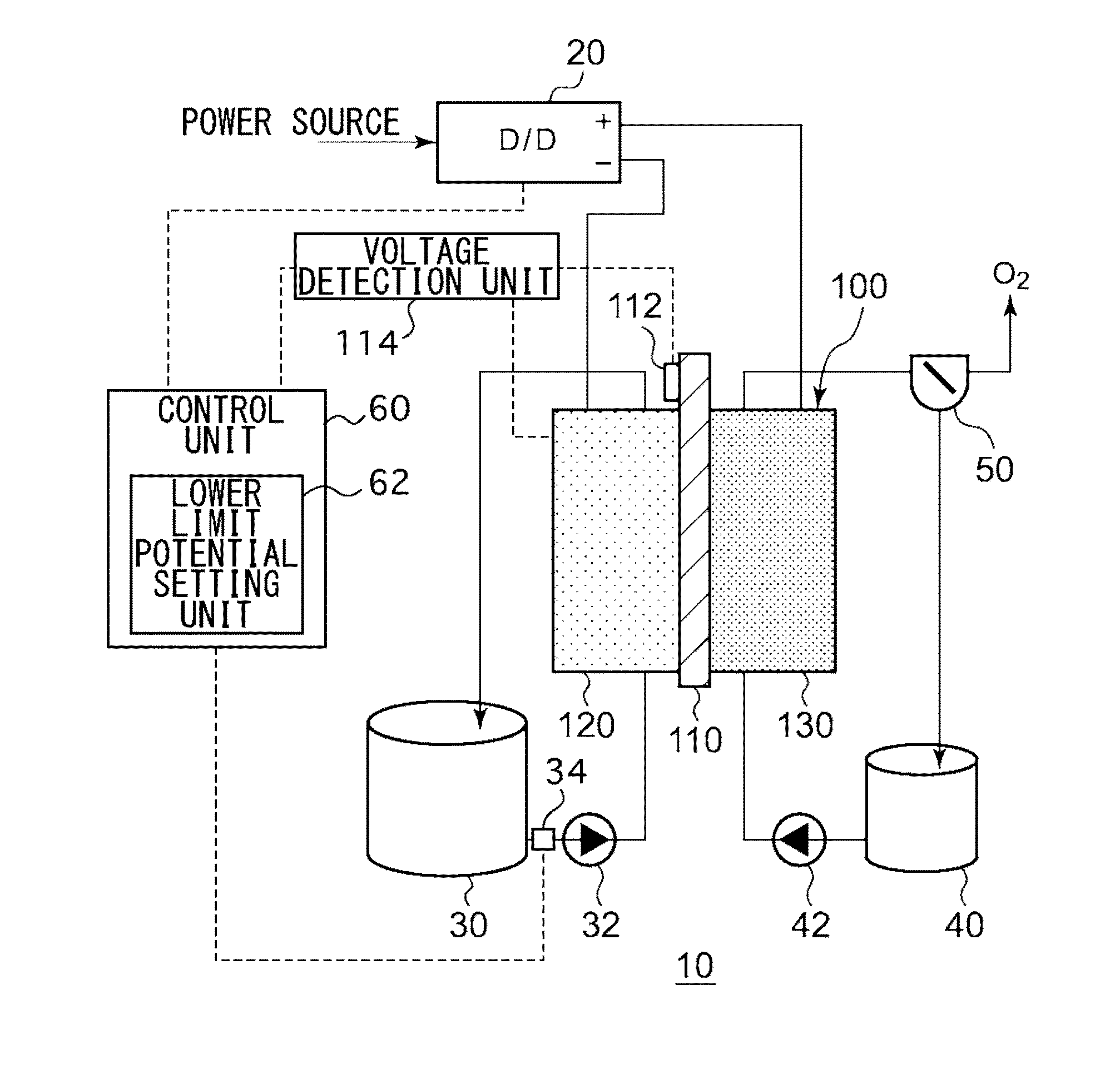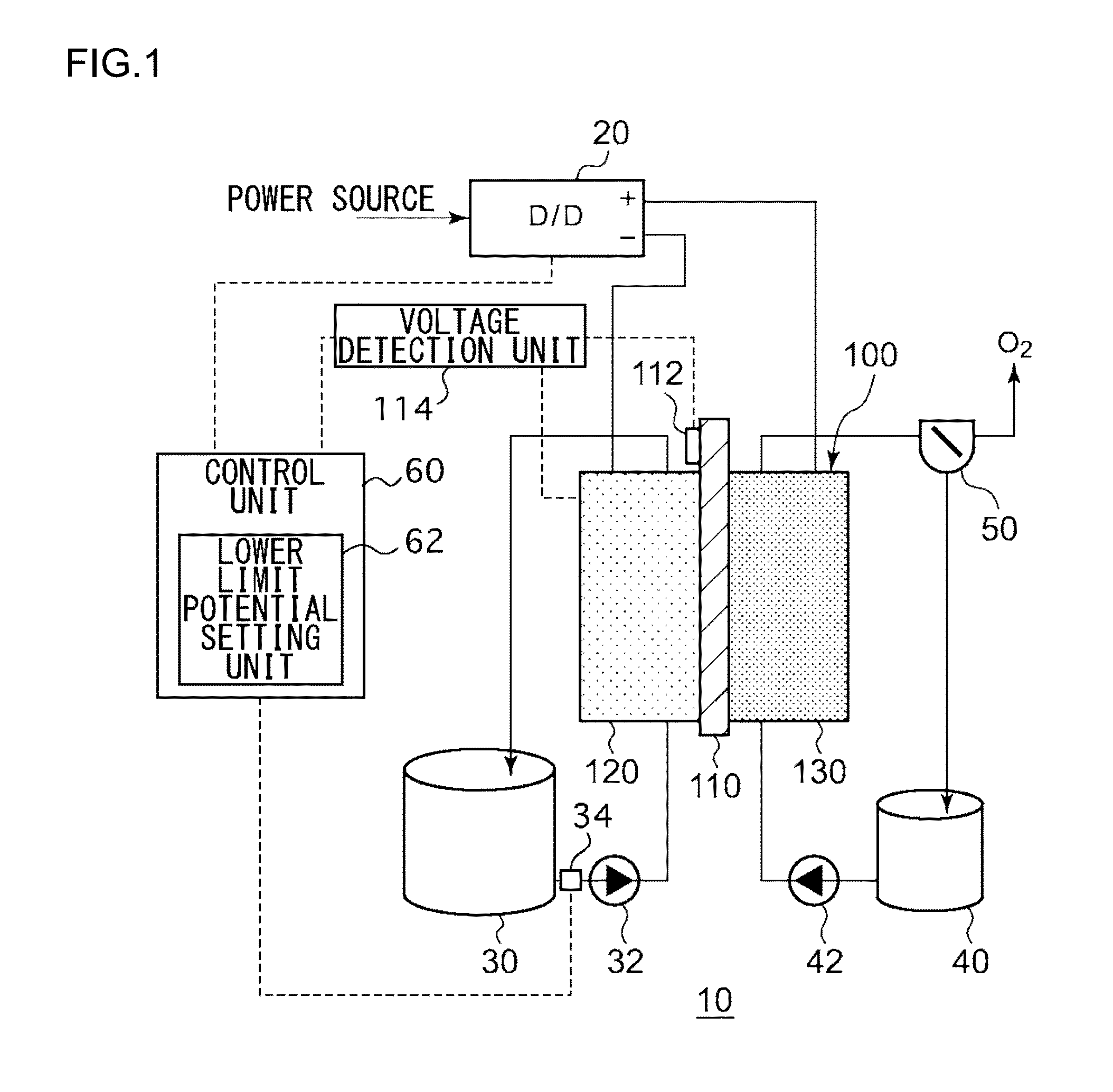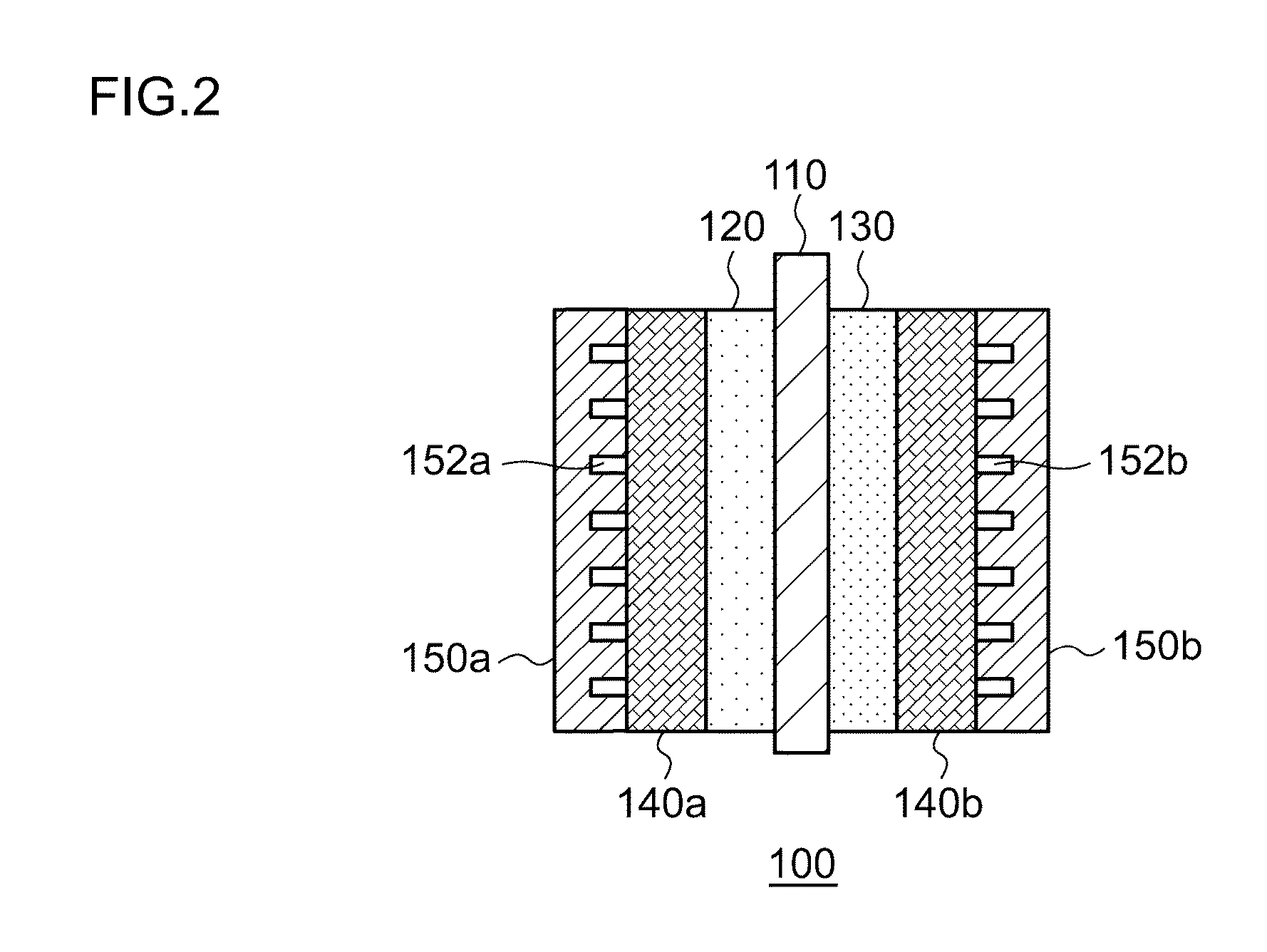Electrochemical reduction device and method for manufacturing hydride of aromatic compound
a technology of aromatic hydrocarbon compound and electrochemical hydrogenation, which is applied in the direction of manufacturing tools, electrode coatings, electric circuits, etc., can solve the problems of small to medium-scale manufacturing of cyclic organic compounds, difficult to industrially hydrogenate aromatic hydrocarbon compounds, and small amount of substances that can be transformed per electrode area or time (current density) that are not large, and achieve high efficiency
- Summary
- Abstract
- Description
- Claims
- Application Information
AI Technical Summary
Benefits of technology
Problems solved by technology
Method used
Image
Examples
embodiment 1
[0024]FIG. 1 is a schematic diagram illustrating the general configuration of an electrochemical reduction device 10 according to an embodiment. FIG. 2 is a diagram illustrating the general configuration of an electrode unit of the electrochemical reduction device 10 according to the embodiment. As illustrated in FIG. 1, the electrochemical reduction device 10 includes an electrode unit 100, a power control unit 20, an organic material storage tank 30, a concentration measurement unit 34, a water storage tank 40, a gas-water separation unit 50, and a control unit 60, as a main configuration. As illustrated in FIG. 2, the electrode unit 100 includes an electrolyte membrane 110, a reduction electrode 120, an oxygen evolving electrode 130, liquid diffusion layers 140a and 140b, and separators 150a and 150b. Hereinafter, the combination of the electrolyte membrane 110, the reduction electrode 120, the oxygen evolving electrode 130, the liquid diffusion layers 140a and 140b, and the sepa...
embodiment 2
[0073]FIG. 4 is a schematic diagram illustrating the general configuration of an electrochemical reduction device according to an embodiment 2. As illustrated in FIG. 4, the electrochemical reduction device 10 includes electrode units 100A, 100B, and 100C, which are each independent. In the present embodiment, the number N of the electrode units 100 is three, but the number N may be any number as long as it is equal to or more than two. The configuration of each electrode unit 100 is similar to the configuration in the embodiment 1, and the explanation about them will not be appropriately provided. In FIG. 4, the electrode unit 100 is simplified for illustration, and the liquid diffusion layers 140a and 140b and the separators 150a and 150b illustrated in FIG. 2 are not illustrated.
[0074]In the present embodiment, the power control unit 20 supplies a voltage Va (A), a voltage Va (B), and a voltage Va (C) each independently between the oxygen evolving electrode 130 and the reduction ...
PUM
| Property | Measurement | Unit |
|---|---|---|
| Temperature | aaaaa | aaaaa |
| Concentration | aaaaa | aaaaa |
| Equilibrium | aaaaa | aaaaa |
Abstract
Description
Claims
Application Information
 Login to View More
Login to View More - R&D
- Intellectual Property
- Life Sciences
- Materials
- Tech Scout
- Unparalleled Data Quality
- Higher Quality Content
- 60% Fewer Hallucinations
Browse by: Latest US Patents, China's latest patents, Technical Efficacy Thesaurus, Application Domain, Technology Topic, Popular Technical Reports.
© 2025 PatSnap. All rights reserved.Legal|Privacy policy|Modern Slavery Act Transparency Statement|Sitemap|About US| Contact US: help@patsnap.com



